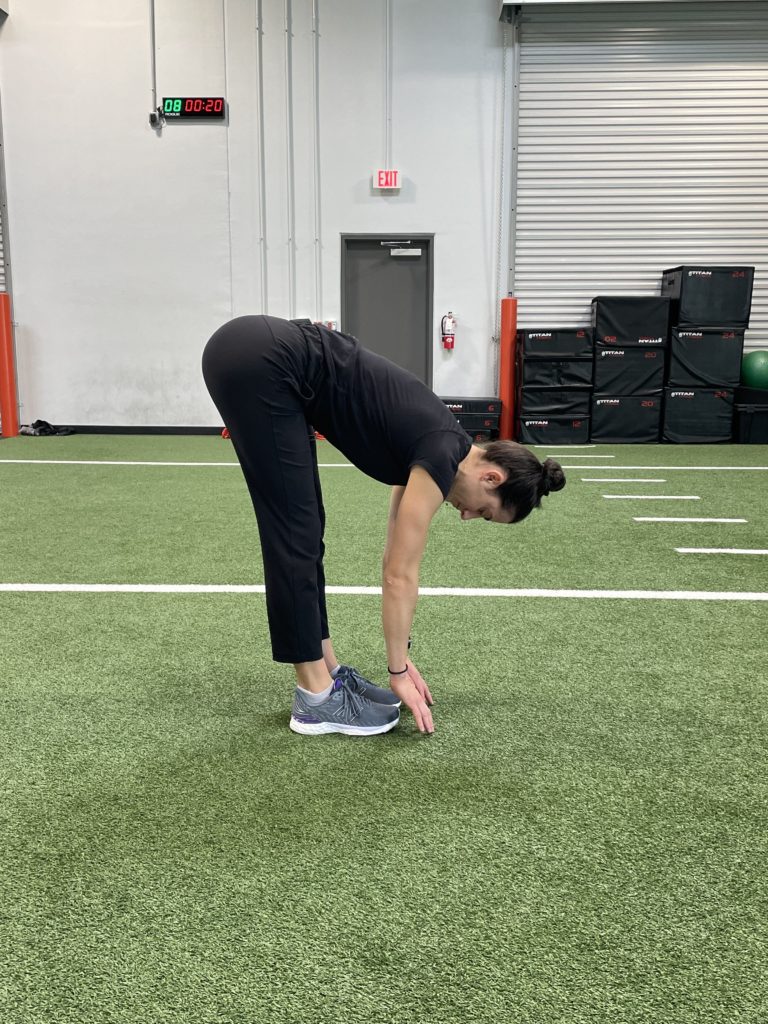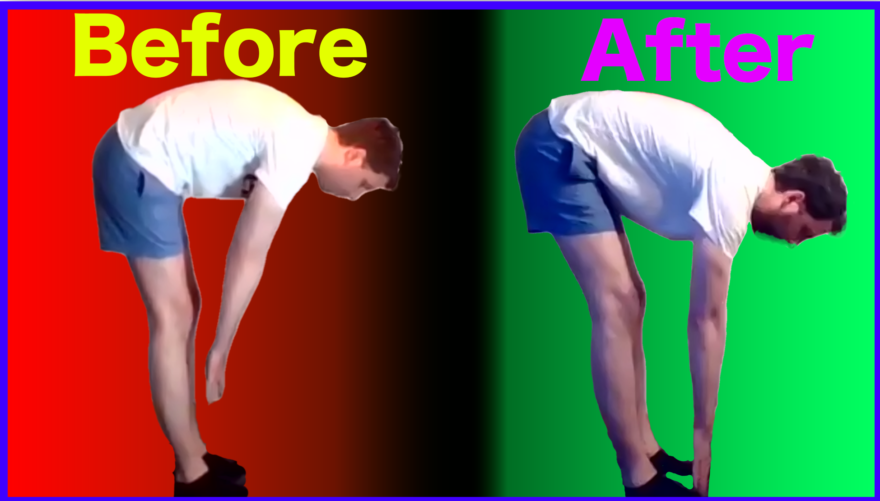Table of Contents
Can you really touch your toes THAT QUICK?
Touching your toes is one of those overall body markers of flexibility, but what if your toes are sooooo far away?
Really, a lack of toe touch boils down to addressing one of two issues. And if you can address those issues with targeted exercises, the toe touche can quickly improve.
In this post, you are going to learn what those issues are, and I’ll illustrate how to address them through a case study.
Check out the post, video, and podcast below to learn more!
What does it take to touch your toes?
In order to touch your toes, the following must happen at the spine:
- Spine rounds uniformly (eccentric posterior chain/posterior expansion + sacral counternutation
- Pelvis shifts backwards (sacral nutation, but from a counternutated start position because of step 1/posterior weight shift)
Physically, it appears as though the spine rounds and then shifts backward.
Oftentimes, people only possess one of these movement skills.
Some can’t round the spine at all, but shift the hips back A TON.

Others (aka this case) round the spine a bunch, but lack that posterior weight shift:

Now you may not be one for visually picking that up. You can also use range of motion testing to see who you are dealing with.
The test results often present in the following way:
Flat back, have the weight shift
| Test | Finding |
| Hip external rotation | Limited (<60º) |
| Hip internal rotation | Slightly limited to excessive (30º or more) |
| Straight leg raise | Normal to excessive (70º or more) |
| Shoulder external rotation | Normal to excessive (90º or more) |
| Shoulder internal rotation | Limited (<70º) |
Round back, LACK the weight shift
| Test | Finding |
| Hip external rotation | Normal to a lot (60º or more) |
| Hip internal rotation | Limited (<40º) |
| Straight leg raise | Limited (<45º) |
| Shoulder external rotation | Limited (<90º) |
| Shoulder internal rotation | Slightly limited to normal (60-90º) |
In this case, we will be talking about the person who has the round back and lacks the weight shift.
Basically, this person needs movements that teach the posterior weight shift.
If you ners out there, we are creating an eccentric posterolower pelvis (aka get the lower glutes to chill).
For that, exercises chosen should basically make that action the only option. By doing this, we can improve sacral nutation, which will loosen up the lower pelvis, allowing the toe touch to occur.
Moreover, the above presentation often has simultaneous increased frontside muscle actvity (concentric anterior ventral cavity). Therefore, choosing activities in the prone position (stomach down) can utilize gravity to help the frontside relax. This occurs because the abdominal contents and airflow will sit more forward in the body.
There were two moves I chose to create this action.
The first was a tall kneeling hinge hold. This movement applies the above principles in a static position:
The second move, a retro quadruped on elbows crawl does as well, but it’s a bit more difficult.
One, now the client is on the ground, so the gravitation influences are greater. Much like a floor pushup is harder than an inclined pushup.
Two, the client has to move backward and in 2-limb support. Meaning that the client must balance on one forearm and one kneecap. This stance increases the difficulty, but also gives the potential for greater motion changes (because you rotate more when the base of support is smaller).
Moreover, backward movement requires space to be created within the body to move into, encouraging backside musculature to relax:
With these two moves, the client was able to get a significant change in his toe touch within the session. 3 weeks later, he touched his toes as soon as the appointment started.



Sum up
There are the keys to improving the toe touch in someone who can’t create a posterior weight shift.
To recap:
- Toe touch requires a posterior weight shift and spinal rounding
- Some people only have one of those skills
- Choose positions that give the person the movement skill they lack
What difficulty have you had with the toe touch? Comment below and let the fam know!
